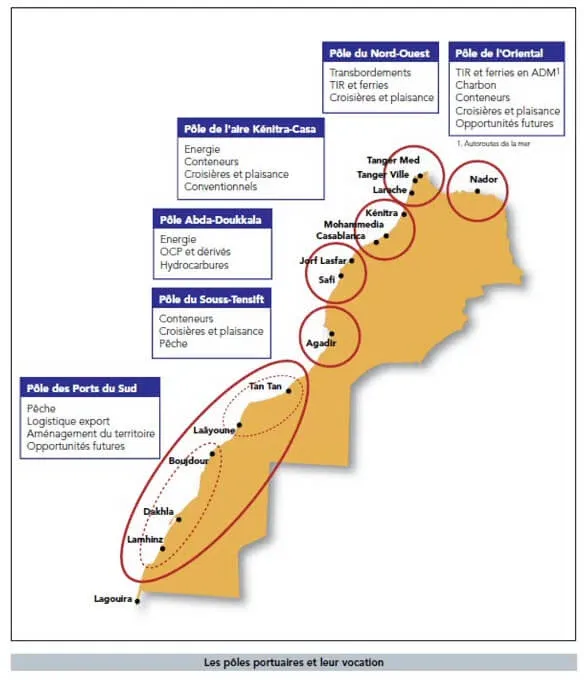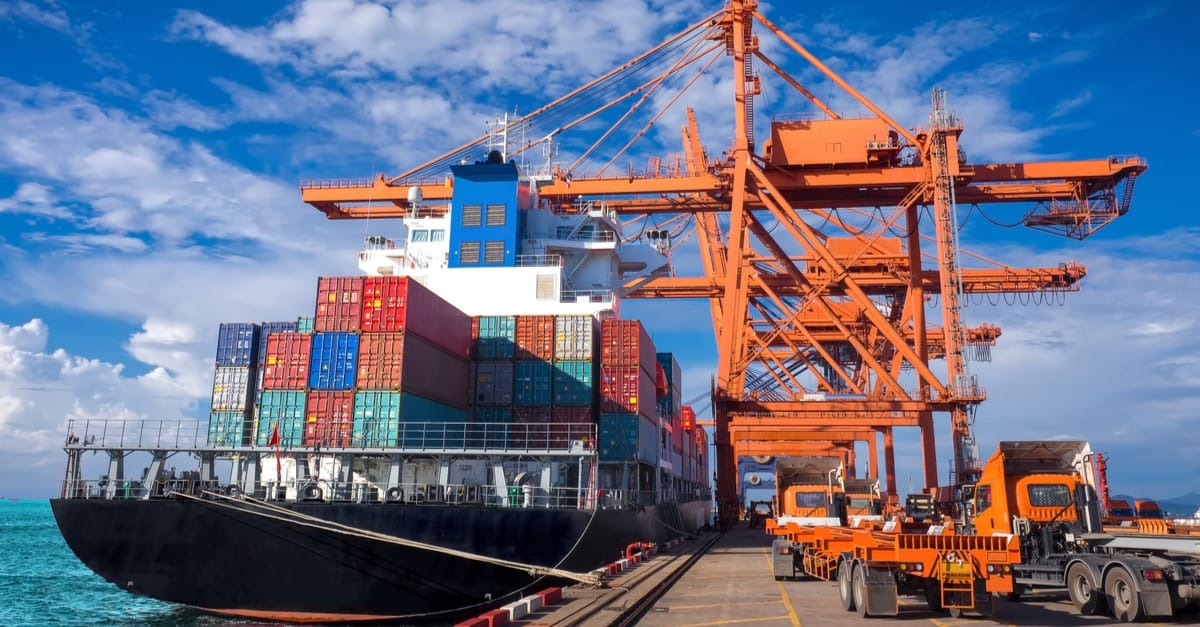Morocco sets forth a strategic plan for its port sector by 2030 to enhance the competitiveness of the Moroccan economy and address its needs at the national, regional, local, and sectoral levels
- Keeping up with the growing demand
- Factors that help increase demand
- Port infrastructure in figures
- Port Strategy 2030
- Investment program
Given its significant geographical location and availability in the Mediterranean port of Tangier, Morocco aspires to occupy a prominent position in the Mediterranean maritime market and leverage all opportunities in the region, thanks to its port strategy for 2030
The national port policy aims to meet port demand by assessing the country's advantages and establishing regional balances within the Kingdom. To achieve this, the North African country adopts an investment regime that takes into account available financing possibilities, identifies priorities, and engages stakeholders as partners to implement projects with the necessary quality and speed.
KEEPING UP WITH THE GROWING DEMAND
Morocco's port strategy considers that Moroccan ports represent an economic lever that must keep pace with global trends
Over the next 20 years, the vision of the port sector is based on coherent development with national land planning policies and environmental preservation.
Given the increase in future port demand (from 290 to 370 million tonnes annually by 2030), ensuring the quality of services offered and improving the performance and competitiveness of port transit requires that Morocco's port system provide the necessary and proactive responses
It should be noted that the transformations accompanying this demand must take into account the harmonious relationship between the city and the port; as well as adopting a new approach to improve performance and increase competitiveness
FACTORS THAT HELP INCREASE DEMAND
- The adopted sectoral strategies and the proximity to Europe provide many trade opportunities
- The progression of the transportation and logistics industries
- The development of the hub concept in container and bulk cargo matters
- The opening of the Moroccan economy to the world with investment opportunities at the national and international levels
- The continuously growing sectors: energy, phosphate, aerospace and automotive industry, fishing, agriculture, and tourism
- The impact of adopted policies and strategies on production and consumption
PORT INFRASTRUCTURE IN FIGURES
The port sector consists of 13 ports open to foreign trade, 10 regional fishing ports, 9 local fishing ports, and 6 tourist ports
The Moroccan port infrastructure consists of six main hubs
- The Eastern Hub: aimed at Europe, the Mediterranean basin, and the Maghreb countries. It consists of the port of Nador, which will be supported by Nador West Med
- The Northwest Hub: a gateway to the Strait with the ports of Tangier Med, Tangier City, and Larache. It is a very important hub for transit, TIR and ferries, cruises, and recreation
- The Kenitra-Casablanca Hub: comprises the two ports of Mohammedia and Casablanca, as well as the new Atlantic Port of Kenitra. Its activities focus on energy, containers, cruises, and recreation, among other conventional activities
- The Abda Doukkala Hub: comprises the ports of Jorf Lasfar and Safi, making it a center for heavy industry, including energy, phosphate and its derivatives (OCP), and hydrocarbons
- The Souss-Massa Hub: represented by the port of Agadir, active in sectors such as fishing, containers, cruises, as well as its tourism aspect
- The Southern Ports Hub: includes three main ports: Tan-Tan, Laâyoune, and the Atlantic Port of Dakhla, along with two others: Lamhiriz Port and Boujdour. The hub is open to fishing, export logistics, land planning, and future opportunities
The 6 port hubs help create strategic regionalism in which, on one hand, a major port plays a fundamental and essential role in land planning and sectoral strategy implementation, and on the other hand, the other ports play a complementary or specialized role

PORT STRATEGY 2030
This strategy aims to improve the provision of internationally recognized port infrastructure, facilities, and services, to promote opportunities and create added value for both economic stakeholders and citizens; while respecting standards of responsible and sustainable environmental management
The port strategy is based on seven axes:
- Seeking improved performance by fostering innovation
- Enhance logistic performance
- Optimally assess port infrastructure
- Position well in the national, regional, and international context.
- Consolidate the role of ports in economic development
- Integrate environmental and urban objectives from the conceptualization stage of investment projects
- Increase adaptability to long-term changes
INVESTMENT PROGRAM
The rehabilitation of the port sector, over the past 10 years, has required an annual investment of 3 billion dirhams. During this period, the demand for ports or commercial flows has steadily increased, reaching an annual growth rate of 6%, thanks to national policies of economic and social development
Establishing infrastructure in the port sector over the next 20 years also requires very significant investments and compatibility between the ambitions of port strategy and the growing demand for ports
Due to the major transformations expected by 2030, these investments will be executed gradually according to priorities. The investment program involves financing key strategic projects to shape the future of Morocco's port system.
It is worth noting that these investments are funded by the state, port agencies, or private sector entities through public-private partnerships Throughout the implementation phase, the investment program is adjusted and adapted to the development of national and international strategies, as well as the evolution of port demand
Article Source: Atalayar






